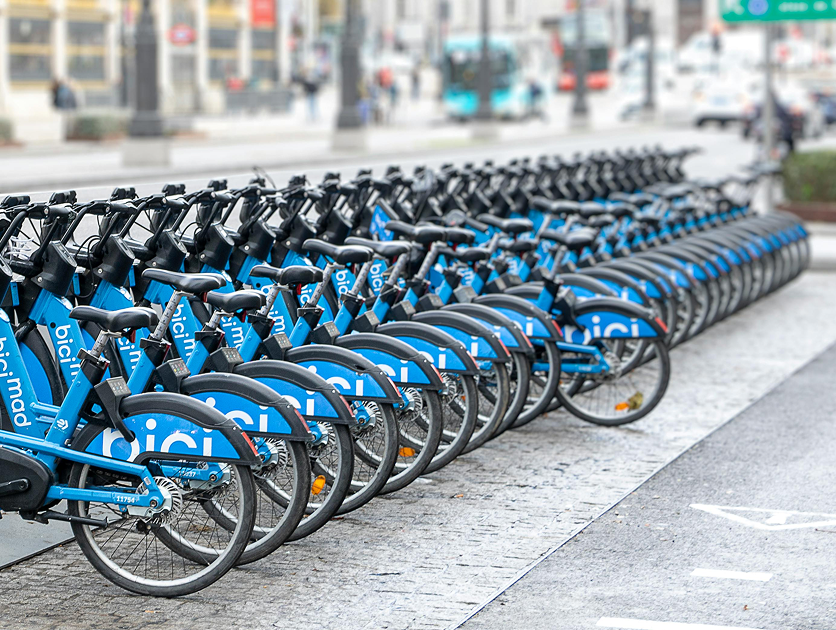Index
Receive our newsletter
Florence is deeply committed to sustainability and the responsible management of waste. The city’s waste and recycling system is designed to make sorting materials easier, minimize environmental impact, and promote a cleaner, more efficient community. For those living in the capital, understanding how this process works is essential, since collection is organized by fractions and on specific days.
How the waste and recycling system works in Florence
Waste management in the city is overseen by Alia Servizi Ambientali, the company responsible for urban cleaning and selective collection. Its goal is to achieve high levels of reuse and minimize the amount sent to landfills.
The model used in Florence is based on fractional collection, meaning that materials are separated by type. This system ensures that each item receives proper treatment and can be reintroduced into the production cycle. It operates throughout both the historic center and the surrounding districts, with slight variations depending on the area.
For residents, following these rules not only contributes to collective well-being but also helps avoid fines. That’s why it’s important to know which bins to use and when to dispose of household waste.
Types of fractions and available containers
The waste and recycling system in Florence separates refuse into five main categories. Each has its own color-coded container and a specific collection schedule.
- Organic (brown): Includes food scraps, fruit peels, coffee grounds, flowers, and other biodegradable items. These materials are turned into compost and later used as natural fertilizer.
- Paper and cardboard (blue): This bin is for newspapers, magazines, cardboard packaging, flyers, and clean paper bags. Folding items before disposal saves space.
- Plastics and metals (yellow): Used for bottles, cans, trays, and lightweight packaging. It’s recommended to rinse containers before tossing them to prevent odors and ease of recycling.
- Glass (green): Intended for bottles, jars, and glass containers. Broken glass, lightbulbs, and ceramics should not be placed here, as they require different processing.
- Non-recyclable waste (gray): This bin is for items that don’t fit into the other categories, such as used tissues, cigarette butts, or hygiene products.
In addition, eco-points and automated collection islands are available throughout the city for items like batteries, used cooking oil, small appliances, or clothing. These facilities are located in various neighborhoods and can be accessed using a resident card.
Collection days and hours
Waste and recycling collection in Florence operates on a weekly schedule. Depending on the district, Alia’s trucks either collect door-to-door or from designated collection areas.
In most neighborhoods, the schedule is as follows:
- Organic waste: three times per week (Monday, Wednesday, and Friday).
- Paper and cardboard: once or twice weekly (Tuesday or Thursday).
- Plastics and metals: twice weekly (Tuesday and Saturday).
- Glass: once per week (Wednesday or Friday, depending on location).
- Non-recyclable waste: twice weekly (Monday and Thursday).
Residents should place their bags outside between 8:00 p.m. and 10:00 p.m., following the assigned day for each fraction. Leaving trash outside of scheduled hours can result in fines, as the City Council enforces strict cleanliness regulations.
In the historic center, waste is typically collected through underground containers or mobile collection points due to limited space and traffic.
Tips for proper waste separation
Taking part in Florence’s waste and recycling system is easy if you follow a few simple guidelines. One of the most effective ways to contribute is to reduce waste volume by avoiding single-use products and reusing items whenever possible.
Another helpful practice is rinsing containers before placing them in the yellow bin, especially those made of plastic or metal. This helps prevent unpleasant odors and makes sorting more efficient. For paper, it’s important to keep it dry and clean, as wet or stained material can’t be recycled.
For organic waste, compostable bags are highly recommended. They improve compost quality and eliminate the need for non-biodegradable plastics.
Residents are also encouraged to use the Alia Servizi Ambientali mobile app, which provides up-to-date schedules, special collection points, and instructions for specific materials such as furniture or electronic devices.
What to do with bulky or hazardous items
Large items such as furniture, mattresses, electrical appliances, or hazardous materials should never be placed with regular waste. Alia offers a free pickup service by appointment, which can be arranged by calling 800 888 333 or filling out an online form. There are also eco-centers across the city where residents can drop off these materials directly.
Complying with waste separation rules not only keeps Florence clean but also reflects respect for the city’s heritage and the quality of life of its residents.
Florence’s environmental commitment
The waste and recycling system in Florence demonstrates the city’s dedication to sustainability and shared responsibility. Through efficient management, the municipality aims to reduce emissions caused by waste accumulation and promote material reuse.
Active participation in this system is a way to become part of the local community. Proper waste separation is a sign of respect for the art, history, and environment that makes Florence one of the world’s most admired cities.









